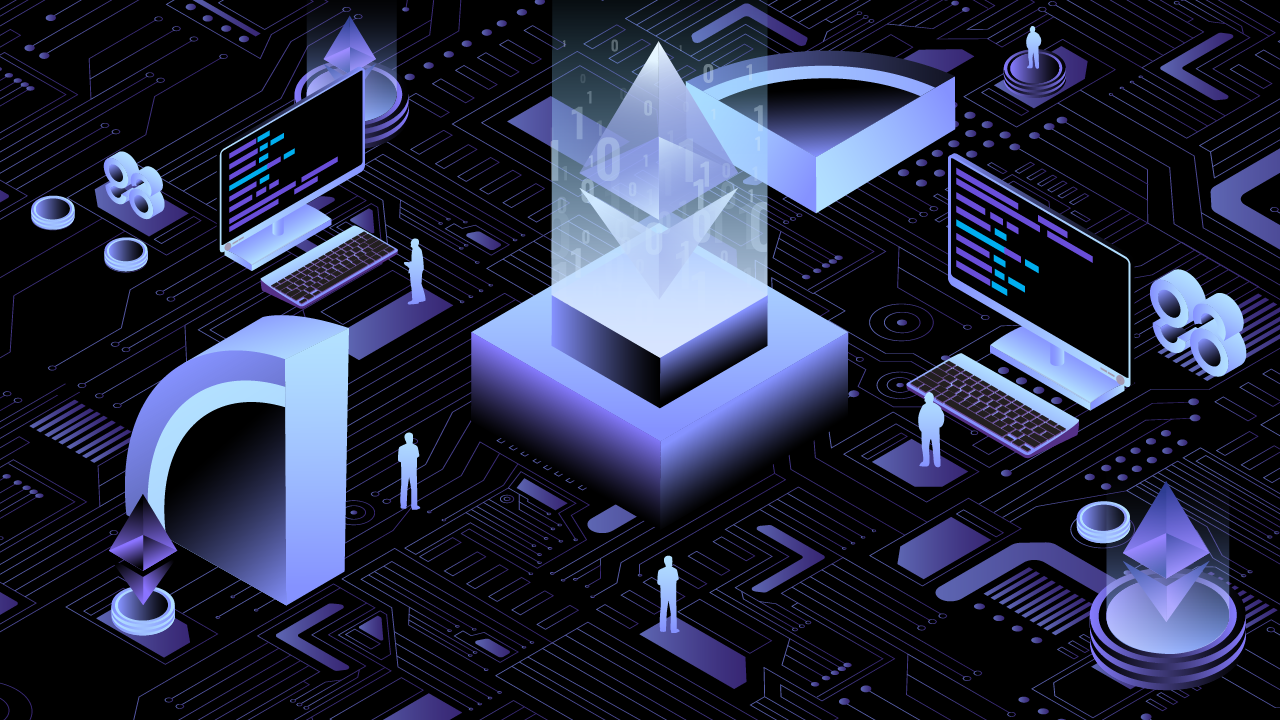What is Solidity? Everything about Solidity language in crypto

What is Solidity?
Solidity is an object-oriented, high-level programming language. It is used to create smart contracts that automate transactions on Ethereum and other blockchains. After being proposed in 2014, the language was developed by Ethereum contributors: Christian Reitwiessner, Vitalik Buterin, Alex Beregszaszi, and others.

Ethereum is recognized as a leading decentralized smart contract platform in the cryptocurrency sector. Anything that can be built on centralized systems, such as decentralized exchanges (DEXs), digital art markets (NFTs), decentralized finance mainframes (DeFi), Metaverse, and more, can generally be built using Ethereum.
Solidity is a high-level programming language whose target market is software developers who want to build dApps (Decentralized Application) on the Ethereum blockchain.
The Solidity programming language makes writing code simpler since it combines letters and numbers with variables, functions, classes, arithmetic operations, string manipulation, and many other concepts.
How does Solidity work?
Ethereum uses the Solidity programming language to generate smart contracts, which supports several use cases, including:
- The Fungible, Non-Fungible token (NFT).
- Compound, Aave, and other decentralized loan marketplaces should be created for fungible tokens.
- Markets for non-fungible tokens should be established, such as OpenSea, SuperRare, etc.
After programmers have created Solidity programs, one of the essential components that help Solidity Code run is the EVM. EVM (Ethereum Virtual Machine) is a virtual computer on the blockchain, which helps developers translate their solidity code into programs that run on Ethereum.
Programmers can write "machine level" code using Solidity that can execute at a higher level on the EVM. The compiler then decompiles the developer's lines of code into executable instructions that the processor can understand.
Pros & Cons of Solidity
Solidity has its benefits and drawbacks, just like any other programming languages, despite being one of the most widely used languages for creating blockchain applications.
Pros
Solidity enables the creation of reliable, transparent, and safe smart contracts. If effectively implemented, they can decrease administrative costs and dependency on third parties while improving operational efficiency.
Numerous Programming Perceptions, like variables, string manipulation, classes, functions, arithmetic operations, and others, are used extensively in Solidity. This is because Solidity is heavily influenced by C++, Python, and JavaScript, making learning and using Solidity very simple if you are already familiar with Java or C.
For Ethereum and the EVM chain, Solidity is one of the most popular blockchain programming languages. It offers a ton of open-source documentation on how apps function and different use cases, so you may start by building more complicated applications using other people's work.
For instance, if you're creating your DEX, you may entirely clone Uniswap's source code and add more cutting-edge features like liquidity farming and lending.
Cons
Although immutability has many benefits, it can occasionally work against users. For instance, it cannot be upgraded or given more features after the contract is finished.
Ethereum relies on blockchain technology to function; thus, there is no other way to quickly collect and update data in the system than through transactional activities. When it comes to variables like volatility data.
The major drawback of Solidity is that it is a relatively new language (when compared to older languages like C or Java). This limits the number of libraries and references available to developers, making it difficult for beginners to understand Solidity.
Should we learn the Solidity programming language?
In terms of earnings, the blockchain developer industry is one of the most alluring in the world. Demand exceeds supply; thus, it makes sense that a Blockchain Developer's compensation is typically pretty high, whether you decide to work for a specific company or to develop your program.
As a programming language used to create applications in Ethereum and the EVM chain, Solidity may be regarded as a blockchain programming language utilized by blockchain developers. Solidity Developers appear to have the highest demand among Blockchain Developers.
Solidity is a language that you should prioritize learning if you plan to utilize it to apply for Web3 jobs because:
- Ethereum has expanded for a few years. As a result, the learning materials and use cases have been thoroughly studied (in comparison to Cosmwasm, Link, etc.), which is very beneficial to your learning process.
- The Ethereum & EVM chain ecosystem is the most extensive and most mature in the cryptocurrency market; thus, there will be tremendous room for expansion.
Conclusion
Web3 is taking the place of Web2, and the development of marginally improved dapps is essential for the next decentralized frontier. Blockchain-based smart contracts are used to create dapps.
They also conduct various transactions between parties quickly, safely, permanently, transiently, and uncensorably. They also lack of intermediaries like banks, notaries, and brokers because they are peer-to-peer validated.
Building dapps from scratch is challenging and time-consuming, especially on the backend. Learning the Solidity programming language is an excellent way to deal with these issues.